In every book-to-film adaptation, there are always going to be a certain amount of changes. HBO’s House of the Dragon has proven to be no exception.
A Matter of Perspective(s)
George R.R. Martin’s Fire and Blood is a particular challenge to adapt, as it is not a POV story like the other A Song Of Ice And Fire [ASOIAF] novels. Instead, the novel is written as a series of historical texts written often with conflicting accounts.
The challenge of the original ASOIAF books was so much content that only a television series can pull off. In HBO’s House of the Dragon [HOTD], the problem is the exact opposite – while ASOIAF had almost too much material to work with, Fire and Blood almost seems to have too little.
The show spends its debut season compressing nearly 20 years of Westeros history into a 10-episode prologue. However, despite the thinness of the material, HOTD manages to be faithful to the book while still throwing in shades of the original text. What makes the writing in HOTD so clever is that they write in elements in Fire and Blood that the novel’s biased historians would never have witnessed, let alone recorded in the history books. Because of these conflicting accounts, the writers have a lot of breathing room as to what elements can be changed or added.
At the end of the day, as long as these changes are done to simplify the story or add to the pacing, no one complains all that much. However, these are the changes from the book that stood out to us the most.
Alicent and Rhaenyra’s Age Gap

One of the small but important changes is the ages of Alicent Hightower and Rhaenyra Targaryen.
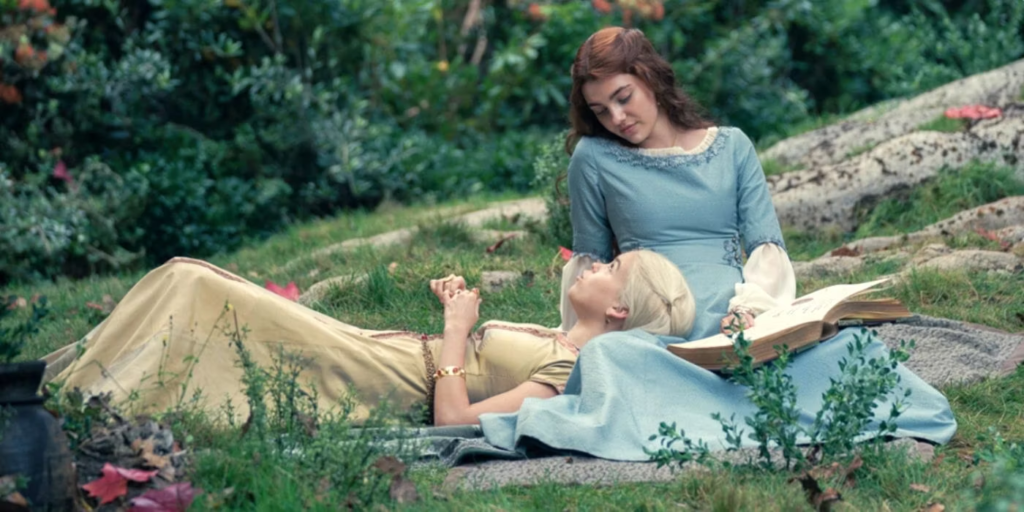
In the book, Rhaenyra was 8 when King Viserys anointed her as heir to the Iron Throne. At that same time, Alicent was 18 when she was married to King Viserys. In fact, before that Alicent as a teenager, was sent to care for the Old king Jaharys on his deathbed. So it was less of her father marrying her best friend so much as father marrying her babysitter.

In the show, both girls appear to be roughly the same age (though Alicent could be a few years older). My belief for this change is they wanted both girls to start as best friends early on. Making them the same age range makes it easier to sell the idea that they were longtime friends.
It’s not the first time that characters’ ages get changed around. Game of Thrones changed the age of the younger characters such as Robb Stark and Jon Snow, who were 14 at the start of the book, and Daenerys was just 13. Obviously, in our modern world, there is a certain amount of suspension of disbelief that a 14-year-old leading an army can put up with, and the same holds with HOTD. the same can be said with Daenerys’ scenes early on for legal reasons.
The Velaryons’ Ethnicity
The appearance of House Velaryon is one of the more controversial changes for some hardcore book readers. Of course, this particular black-to-white casting would receive its fair share of knee-jerk rasism in its initial reception, but ultimately proved to be handled quite gracefully and tastefully in HBO’s adaptation.
The reason for the “traditional” bookreader backlash stemmed from the fact House Velaryon hailed from the same Valyrian ancestry as House Targaryen, and as such are usually described/depicted with the same pale skin, violet eyes, and silver hair. The families also had a rampant habit of inter-marrying to the point where by the time of Robert’s Rebellion in ASOIF, the families were essentially indistinguishable.
Some fans take issue with this compared to other fantasies as ASOIF always had a more grounded universe, where the race of the characters matched the regions they lived in. Westeros was medieval europe, Dorne is supposed to be standing for Moorish Spain, and the lands below the Southern Isles are supposed to be more African.

The most likely reason for this change is to help make a clear visual difference between the two houses. There are only so many silver-haired lords the audience can follow.
This change also makes the parentage of Rhaenyras children that much more obvious being not just hair, but skin tone as well. These elements I was very concerned about, fortunately, this plotline was handled very well making it clear that it is an open secret to all at court except the ailing King Viserys himself.

Despite my initial reservations fearing it to be tacked-on tokenism, Actor Steve Toussaint has come to embrace this character and give him a strong sense of authority and ambition. So long as the performances and writing is strongly executed, it is enough to get past the petty prejudice of hardcore fans. Furthermore, the Velaryons have always been described in the show as exotic houses compared to the other houses of Westeros so it is still within the suspension of disbelief.
Quick Fact: Corlys’s wife, Rhaenys, also had brown hair in the book – as her mother was a Baratheon. which still left a level of ambiguity to Rhaenys children’s parentage.
Mysaria’s Pregnancy was Real

In the book, Prince Daemon stole a dragon egg to give to his unborn child with his mistress, Mysaria, causing a stand-off much like what we saw in the show.

After Daemon gives up the egg in Fire and Blood he sent his mistress back to Lyse where she allegedly miscarries en route.
In the show, however, the pregnancy and subsequent standoff was all a just ruse by Daemon to get attention from King Viserys. The book also never mentions that it was Rhaenyra that persuaded Daemon to give up the egg.

This is a clever way around the books since Fire and Blood was created as a historical account, and court historians’ only sources would have been their letters and messages. Dameon wanting to give the egg Mysaria’s unborn child sounded very real in the books. That’s because only the masters would have kept those false letters sent and incorporated those lies into their history.
The Spurning of Criston Cole
One element from the book that was touched upon was the hidden love between Kingsguard Sir Criston Cole and Princess Rhaenyra early on.

In the book, Rheanyra did make the moves on Criston shortly after her little brothel adventure with Daemon, only to be rejected. Consumed by her grief through pure sexual frustration, she gave her virginity to Sir Harwin Strong.
In the show, Sir Criston (though reluctant) did go through with bedding Rhaenyra. My best guess is for two reasons: 1) sex sells 2) the biased historians behind the text of Fire and Blood would want to portray Sir Cole as a paragon of Kingsguard knights.
The Very Public Killing of Joffrey Lonmouth

One of the more confusing scenes in HOTD was Sir Criston Cole’s murder of Leanor’s lover, Joffery Lonmouth, also known as the “Knight of Kisses”.

Critics of the show take issue with is how Cole was able to get away with a very public murder in plain view of the whole court, somehow receiving no consequences for a needless and wrathful killing. The Kingsguard may be battle-hardened guardians, but bodyguards don’t just murder random people out of spite – that’s somewhat counter-productive to protecting your monarch, after all.
In Fire and Blood, Joffery and Criston face off during one of Rhaenyra’s wedding tournaments. Getting killed in a sanctioned duel was the perfect excuse why Sir Criston was never reprimanded.

My best guess for this change was there was already a big-budget tourney earlier this season. considering all the other money poured into the other scenes and the time constraints telling this 20-year story it’s not surprising corners were cut.
Where is Daeron?
When we think of Alicents children we immediately think of her two legitimate sons which put Rheanyra’s ascension in doubt. However, the book described not 2 sons but 3. The youngest of the Green Children was prince Daeron Targaryen. It was said that He was Alicent’s favorite son as he was the most gentle and courteous without the vicious tastes his brothers held.
Thus far in HOTD, Daeron has yet to make an appearance or otherwise receive so much as a mention. However, there is still a possibility that he may appear in the second season. One of the reasons Dareon wasn’t around much in the events of the Rogue Prince chapter was because most of his time he was fostered in Oldtown to serve as steward to his uncle, Lord Ormund Hightower. His prowess would not be revealed until the Dance of Dragons escalated into a full-on war. In one account Daeron would earn his name, “Daeron The Daring”, as he would use his dragon, Tsarian, in an attempt to save his uncle Ormund Hightower’s army.
There is still a chance that Daeron will make an appearance in season 2. However, it would be understandable if he were to be cut from the show entirely, as his story doesn’t contribute to the overall plot compared to his brothers. This wouldn’t be the first time this has happened in GOT.
In ASOIAF there were plenty of POV characters like Victarion Greyjoy and Young Griff that have entire chapters dedicated to them, but the showrunners made the sensible choice to exclude them from the show. With an already bloated cast of characters and stories to keep up with, it makes sense to trim some of the fat. There’s a reason why Peter Jackson excluded Tom Bambodil when making the Lord of the Rings films.
Helaena’s Gift of Prophecy

HOTD has also gone to great lengths to expand on the Green children. One of the more interesting additions was adding Alicents only daughter Helaena Targaryen. Starting at a young age Helana often mutters mysterious lines that become eerily prophetic in her more obvious lines when Alicent says Aemond will have a dragon “he will have to close an eye”. Like her father Visarys, Helaena is among those in her family that have the gift of prophecy.
This was a welcome addition in that it help add something more to Helana as a character. In Fire and Blood there wasn’t much to her aside from being a traumatized woman. This may be a minor addition, but it is always a good thing to add to characters that are bare bones. It also adds some tragedy for this character later in the show when the events of “Blood and Cheese” come to fruition.
Laenor’s Fate

One of the more elaborate twists in HOTD was Rhaenyra’s willingness to have her first husband, Laenor Velaryon, removed so she is free to marry her sweet uncle Daemon.

In the books, Laenor was murdered by his sparring parter / lover, Sir Qarl. It was heavily implied that Daemon hired Qarl to kill Laenor and when awaiting his payment Daemon betrays and kills him to hide the proof.

In HOTD, both Daemon and Rhaenyra plot to Laenor’s death so it would seem, only to have Daemon use a fake body with the same feature burned in the fire, leaving a shaven Laenor free to sail to Essos together.
Once again HOTD is throwing shade at its own source material in its own elaborate way.
The Murder of Lord Beesbury at the Green Council

One of the more scenes we particularly anticipated was the meeting of the Green Council on the eve of King Viserys’ death – which in turn would result in the death of Lord Beesbury, as he declined to support Alicent’s ploy for the throne.
Now, the book has several differences to how Beesbury was killed, from being thrown in the dungeons or out of the window. The most commonly accepted was that Sir Criston opened Lord Beesbury’s throat with a dagger.
In HOTD, Beesbury’s death is portrayed as somewhat accidental – Sir Criston forces Beesbury to sit down after his outburst, resulting in his head violently smashing on the table.
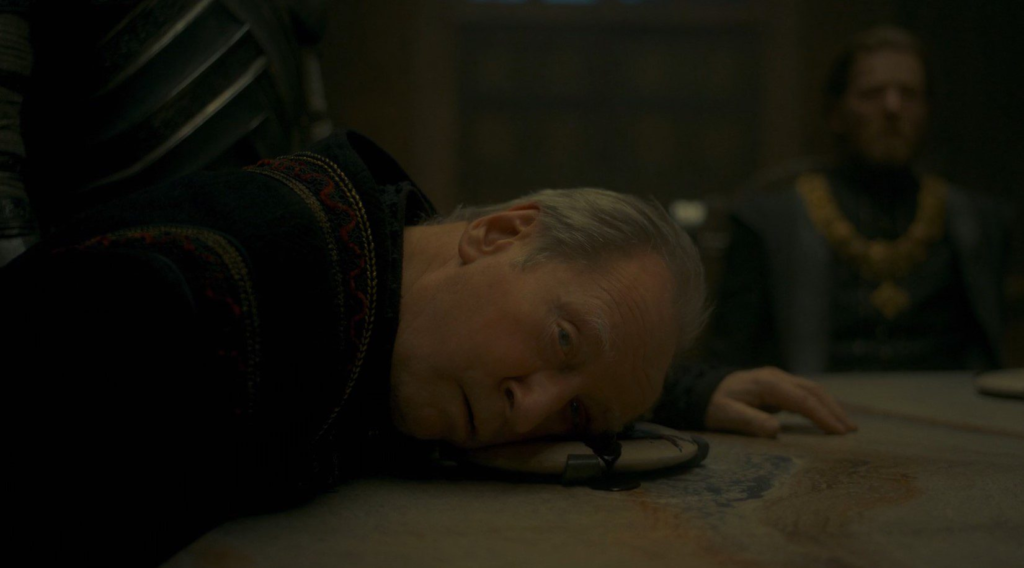
Whats also missing is Sir Criston’s speech about the reality of Rhaenyra’s exploits and the consequences of having a bastard on the Iron throne. It was Criston’s resentment of his spurned lover and conflicting of his “knightly” values” manifesting itself which was why he became the kingmaker by murdering Lord Beesbury.

Princess Rhaenys’ Great Escape
In a controvertial but climactic scene, Princess Rhaenys – “The Queen that Never Was” – escapes from King’s Landing on dragonback while declining to roast the entire Green/Hightower family during Aegon’s coronation.

This may be the only change the show makes that is completely divorced from the book. This is also a much harder event to write about if it follows the book’s unreliable narrative. I highly doubt that what is essentially a dragon terrorist attack would have been kept quiet in the history books.
… Unless Aegon really didnt want this embarassing detail recorded.
Aemond’s Ambush was Remorseless
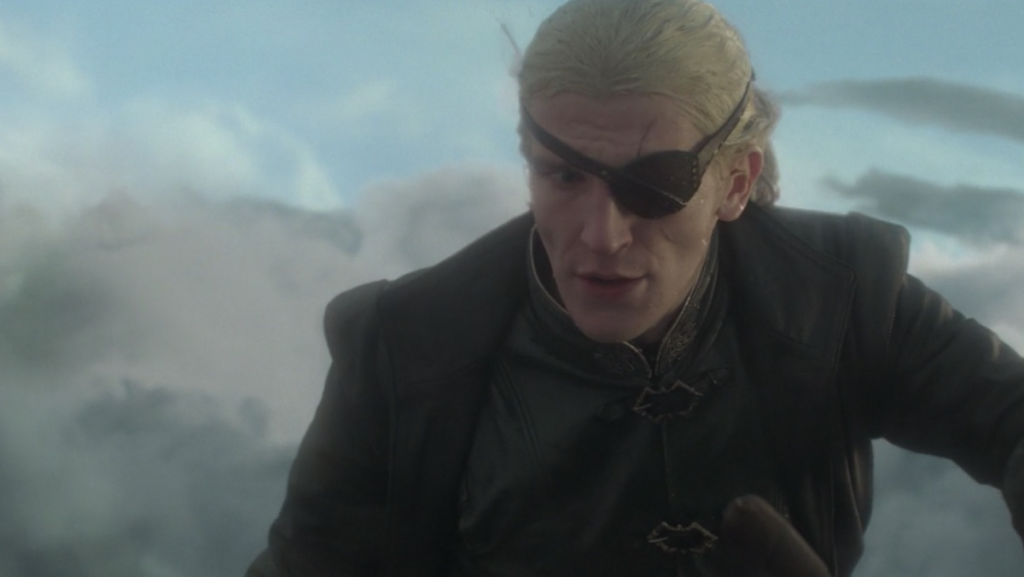
One of the more curious changes was Amound’s ambush of his Nephew Lucarys.
In Fire and Blood Aemond killed Luc and his dragon, Arrax, of his own volition. It was the culmination of the resentment Aemond secretly held toward Lucarys.
Here its portrayed as school bully stunt gone horribly wrong. The idea of this scene is dragons are never truely beholden to their rider, but we feel they could have been a better way of conveying that.
Conclusion

Despite the challenges in writing the showrunners did a fantastic job taking these obscure details in the Novel and expanding on them in a way we never thought possible. Changes are always going to be necessary for any adaptation but so long as they stick true to the spirit of the source material. All this makes us very excited about the next season.

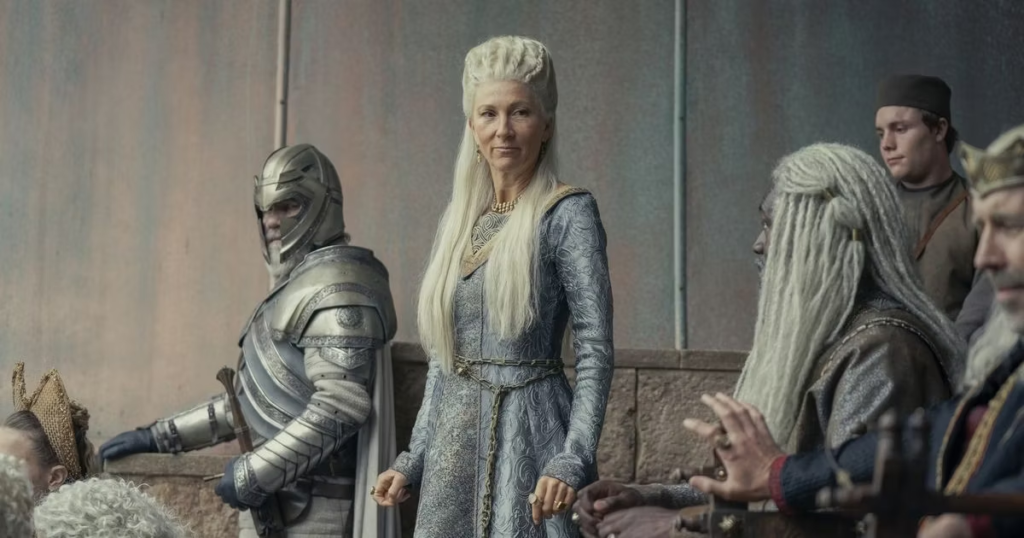





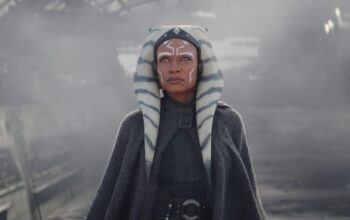

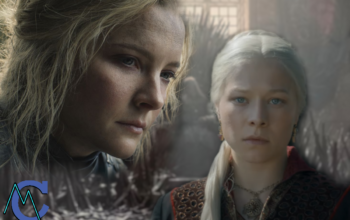
Thanks, I have recently been searching for information approximately this subject for ages and yours is the best I have found out till now. However, what concerning the conclusion? Are you certain about the supply?